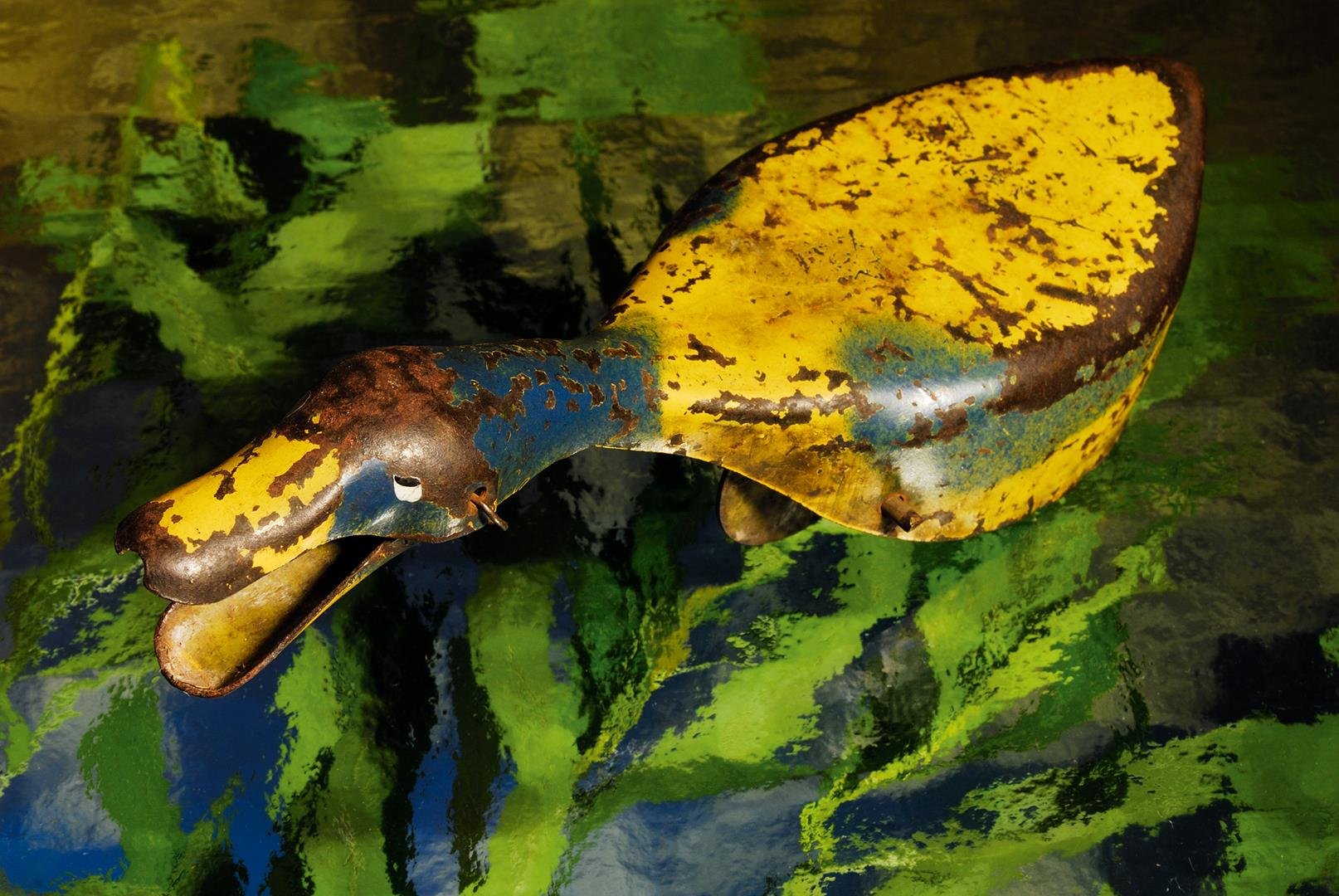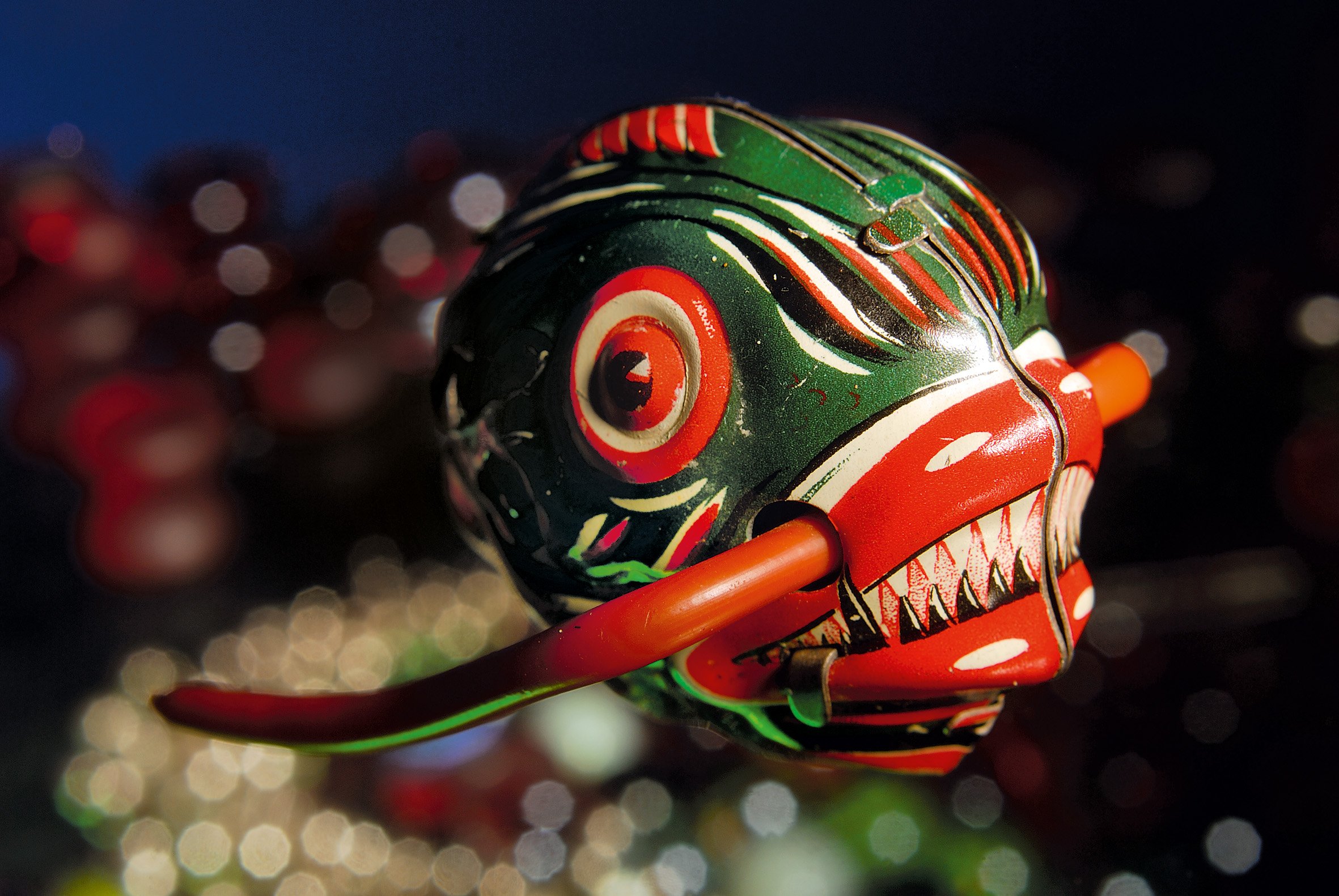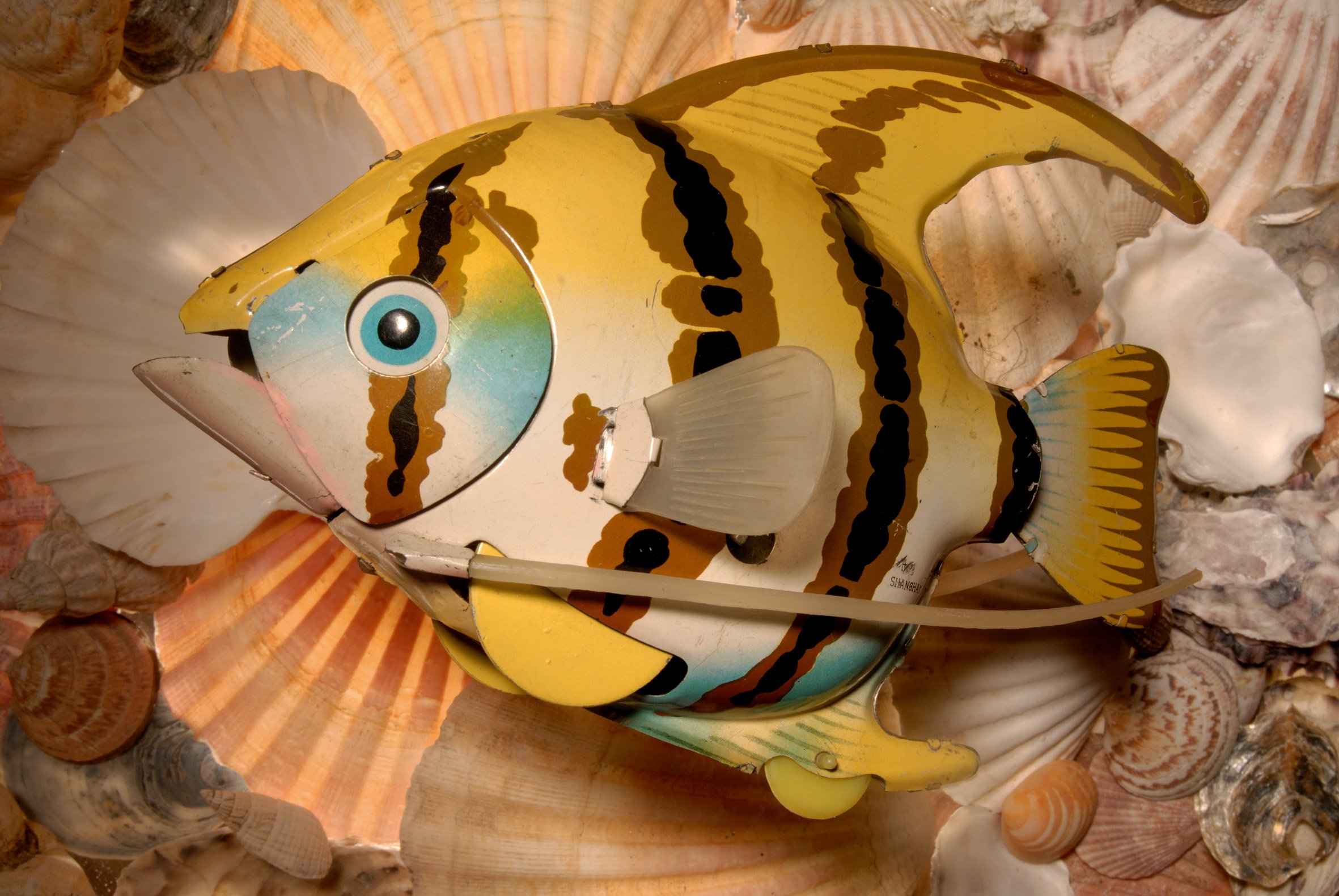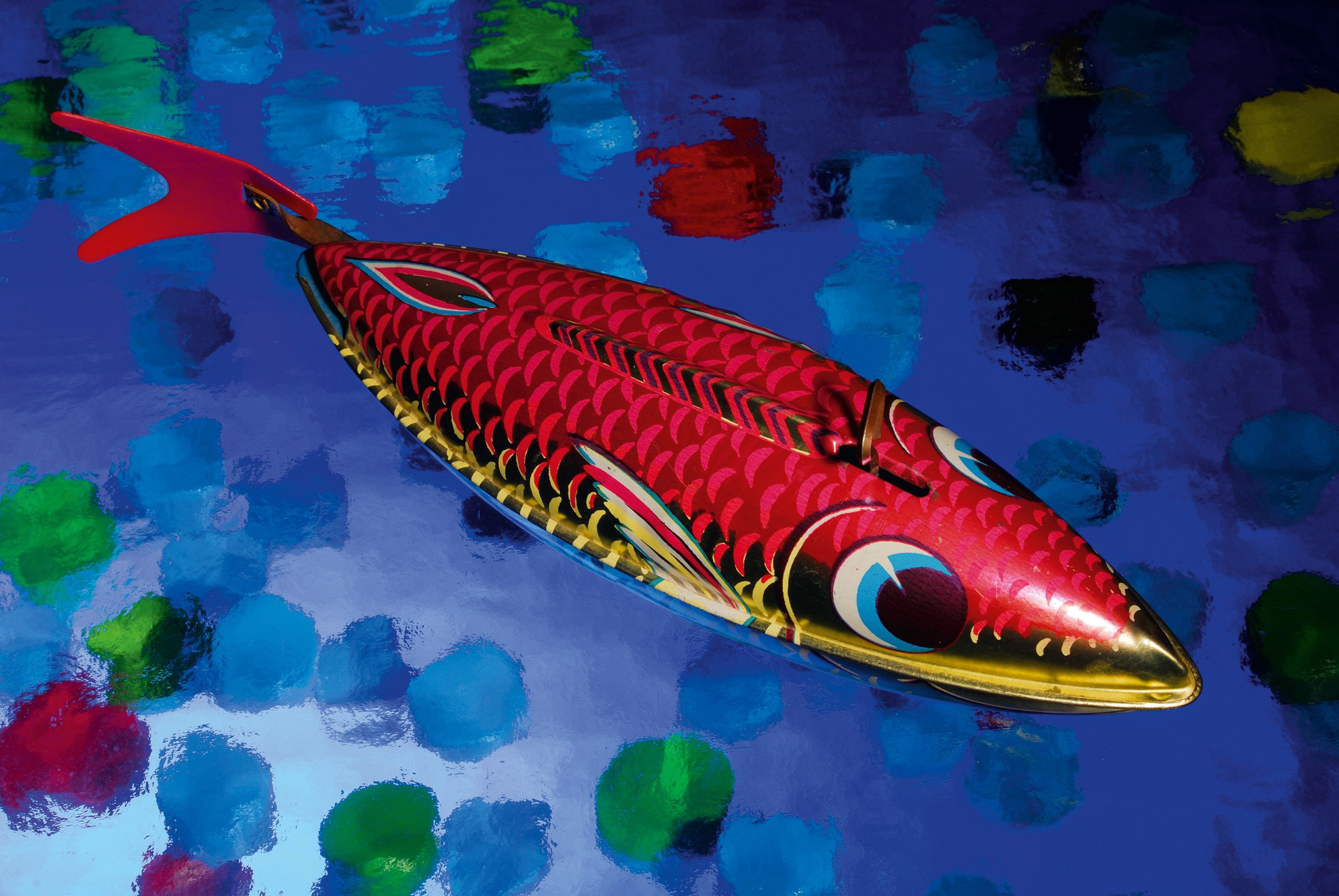The tin toy industry
Animals provided the inspiration for the first mechanical toys in the late 19th century; after all, planes and cars had not yet been invented and were therefore not part of the everyday street scene. It was the time of industrial revolution and emerging mass production, and toy manufacturers managed to produce small, high-quality technical toys and sell them on an international scale. Both children and adults were captivated by the exotic and multi-coloured species of creature that were the first wind-up tin toy animals. The tin toy industry developed most rapidly in Germany thanks to manufacturers such as Issmayer, Ernst Paul Lehmann and Schuco. Between approximately 1950 and 1960, Germany grew to become the stronghold of this industry. Years of success followed, but eventually the wind-up toys had to make way for their plastic successors and the little technical miracles became genuine collector's items.
The mechanical water world
‘We are very proud of this exceptional collaboration between the Natuurhistorisch Museum and the Kunsthal', said Kunsthal curator Charlotte van Lingen. Curator Kees Moeliker of the Natuurhistorisch Museum is also enthusiastic: ‘We have included the wind-up creatures in our new biodiversity exhibition, placing them between their stuffed and pinned contemporaries to illustrate just how lifelike they are.' At the Kunsthal, the tin water creatures are exhibited in between ten staged photographs, and children can make their own water creatures in a specially equipped craft corner. Visitors to the exhibition can imagine themselves to be in a huge aquarium. The water creatures hang in front of the auditorium window from where the land and air creatures, made at the Natuurhistorisch Museum, can be seen on the other side. Visitors find themselves in one great world of wind-up animals.
The collection has been assembled and photographed by Sebastian Köpcke and Volker Weinhold, Berlin.

Special discount
A special admission discount will apply for both the Kunsthal and the Natuurhistorisch Museum while the ‘Wound-Up Little Animals' exhibition lasts. Anyone with an admission ticket for the Kunsthal may visit the Natuurhistorisch Museum for the price of a children's ticket (€3), and an admission ticket for the Natuurhistorisch Museum includes free entry to the Kunsthal.


